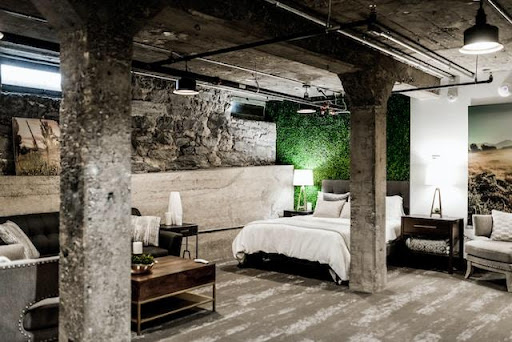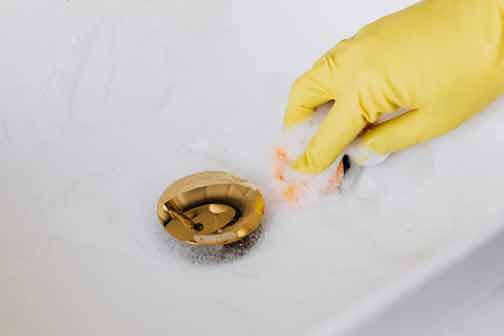Understanding the inner workings of your home’s plumbing system is essential for any homeowner. While it may seem complicated at first, a beginner’s overview can provide clarity on the various components and mechanisms that make up your plumbing system. This article aims to demystify the plumbing system, offering insights into its functionality, common issues, and maintenance tips.
The Plumbing System
The plumbing system within a home consists of a complex network of pipes, fixtures, valves, and other components that facilitate the flow of water and waste. It serves essential functions such as providing clean water for consumption, washing, and sanitation, as well as safely disposing of waste materials.
The main elements of a plumbing system include:
– Supply lines: These pipes carry freshwater from the main water supply to faucets, showers, toilets, and other fixtures throughout the house.
– Drain-waste-vent (DWV) system: This network of pipes carries wastewater and sewage away from the house and prevents harmful gases from entering the living spaces.
– Fixtures: These include sinks, toilets, showers, bathtubs, and appliances that require water connections. They are connected to both the supply lines and the DWV system.
– Valves: Valves control the flow and pressure of water within the plumbing system. They are used to isolate specific areas, regulate water flow, and shut off the water supply when necessary.
Water Supply
The water supply for your home comes either from a municipal water source or a private well. Municipal water is treated and supplied through a public system, while a private well draws water from underground sources. Regardless of the water source, a home’s plumbing system connects to the main supply line.
Generally, a shut-off valve is installed near the point of connection, allowing you to control the water supply to your home. This valve should be located and marked for easy accessibility in the case an emergency water line repair service is needed.

Supply lines are typically routed through walls, ceilings, or the basement, eventually connecting to individual fixtures.
Supply Lines
The supply lines are responsible for delivering water to the fixtures in your home. In most cases, these lines are made of copper, PEX (cross-linked polyethylene), or PVC (polyvinyl chloride) pipes. The choice of piping material may vary depending on local building codes, cost, and specific requirements.
Supply lines are typically routed through walls, ceilings, or the basement, eventually connecting to individual fixtures. Along the way, they may branch off to accommodate multiple fixtures. These lines are pressurized to ensure a steady flow of water to the various outlets in your home.
Drain-Waste-Vent (DWV) System
The DWV system is responsible for removing wastewater from your home and maintaining proper ventilation. This system prevents sewage gases from entering your living spaces, ensuring the health and safety of occupants.
Wastewater flows from various fixtures into drain pipes, which are sized according to the expected volume of waste. These pipes are angled to allow for the smooth flow of waste and prevent clogs. Vent pipes extend from the drain pipes to the roof, enabling the release of gases and maintaining neutral pressure within the system.

Regular maintenance and appropriate usage can prevent clogs from occurring.
Common Plumbing Issues
Understanding common plumbing issues can help homeowners identify and address problems before they escalate. Some of the most common plumbing issues include:
– Leaks: Leaking pipes, faucets, or fixtures can waste water and cause damage to your home’s structure. Prompt repairs are crucial to prevent water damage and conserve water resources.
– Clogs: Clogged drains or toilets are often caused by the accumulation of debris, grease, or foreign objects. Regular maintenance and appropriate usage can prevent clogs from occurring.
– Low water pressure: A decrease in water pressure can be caused by mineral buildup, leaks, or issues with the water supply. Diagnosing and resolving the underlying cause can restore proper water pressure.
– Burst pipes: Cold weather or excessive pressure can cause pipes to burst, leading to severe water damage. Adequate insulation and regular inspections can prevent burst pipes.
Maintenance Tips
To keep your plumbing system in optimal condition, here are some maintenance tips:
– Regularly check for hidden leaks and address them promptly.
– Avoid pouring grease, oil, or harsh chemicals down the drains.
– Install drain guards to prevent the entry of debris and hair into the pipes.
– Insulate exposed pipes in cold climates to prevent freezing.
– Schedule periodic sewer camera inspections by a licensed plumber to identify potential issues.
– Familiarize yourself with the location of shut-off valves and how to use them in emergencies.
Conclusion
Having a basic understanding of your home’s plumbing system is invaluable for any homeowner. By knowing the inner workings, common issues, and maintenance tips, you can ensure the longevity and efficiency of your plumbing system. Remember to seek assistance from a good plumber when necessary and address any plumbing issues promptly to avoid more significant problems in the future.
